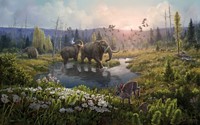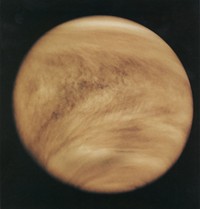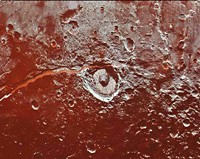Advertisement
Grab your lab coat. Let's get started
Welcome!
Welcome!
Create an account below to get 6 C&EN articles per month, receive newsletters and more - all free.
It seems this is your first time logging in online. Please enter the following information to continue.
As an ACS member you automatically get access to this site. All we need is few more details to create your reading experience.
Not you? Sign in with a different account.
Not you? Sign in with a different account.
ERROR 1
ERROR 1
ERROR 2
ERROR 2
ERROR 2
ERROR 2
ERROR 2
Password and Confirm password must match.
If you have an ACS member number, please enter it here so we can link this account to your membership. (optional)
ERROR 2
ACS values your privacy. By submitting your information, you are gaining access to C&EN and subscribing to our weekly newsletter. We use the information you provide to make your reading experience better, and we will never sell your data to third party members.
Analytical Chemistry
Dinosaur Thermometry
Isotope Analysis: Sauropods’ body temperature was same as that of large modern mammals
by Sarah Everts ,
June 27, 2011
| A version of this story appeared in
Volume 89, Issue 26

\

\
By examining 13C and 18O in sauropod teeth (above), researchers found that these large dinosaurs had body temperatures similar to that of modern-day mammals.
By analyzing carbon and oxygen isotopes in the tooth enamel of ancient dinosaur fossils, researchers have discovered that the extinct animals’ body temperature was the same as that of large modern-day mammals: 36–38 °C (97–100 °F).

The research supports the theory that dinosaurs were warm-blooded, instead of cold-blooded, animals—a topic of fierce debate for decades among scientists. Still, more experiments are required to conclusively resolve the controversy, says Thomas Tütken, a geochemist at Germany’s University of Bonn who participated in the research along with Caltech’s Robert A. Eagle and many collaborators around Germany and the U.S. (Science,DOI: 10.1126/science.1206196).
Beyond reporting the body temperature of dinosaurs, the isotope-based technique can be “applied to all sorts of problems in earth science, in fact pretty much in any instance where you are interested in the temperature at which a carbonate material, such as a fossil, formed,” comments Benjamin H. Passey, an earth scientist at Johns Hopkins University.
For example, with the shells of an extinct marine organism, researchers could use the isotope technique to infer the temperature of the water they lived in when they formed and therefore deduce the temperature of the ocean in a particular geologic period. The technique can also be used to resolve questions about whether meteorites formed in the heat of the early solar system or in the cold backwaters of space, Passey says.
The isotope technique relies on the fact that 13C and 18O preferentially bind to one another. Carbonate enriched in 13C and 18O is found in many minerals, including those found in teeth, bones, and meteorites, Tütken explains.
In particular, the precise amount of 13C–18O-rich carbonate in a tooth mineral is related to the temperature at which the tooth formed. For example, animals with high body temperatures incorporate less 13C–18O-rich carbonate in their enamel than do animals with low body temperatures.
The researchers calibrated the isotope technique with many modern-day animal teeth to ensure that the protocol gave accurate results for the incisors of large plant-eating dinosaurs called sauropods.
Christophe Lécuyer, a geochemist at the University of Lyon, in France, previously proposed, on the basis of oxygen isotope measurements of phosphate-containing fossils, that dinosaur body temperature was close to that of large mammals. The new technique, based on both carbon and oxygen isotopes, he says, provides a more direct measurement of dinosaur body temperature because it doesn’t require any assumptions about environmental conditions to arrive at an answer.
To help resolve whether dinosaurs were warm- or cold-blooded, Eagle and Tütken’s team is now applying the isotope technique to teeth from both large and small dinosaur species found in many locations over many time periods.





Join the conversation
Contact the reporter
Submit a Letter to the Editor for publication
Engage with us on Twitter